
Man’s quest for ultimate top speed is well over a century old. Steam and internal combustion powered cars were run on beaches, later on dry lakes like Bonneville Salt Flats. The first generally recognized motorcycle speed record was set on Ormond Beach, Florida, by Glenn Curtiss in 1903, with a 240 cubic inch, V8 aircraft engine motorcycle that was timed at 136.27 mph. In 1903 few production motorcycles could achieve speeds of 50MPH.
June 4, during Vintage Rally, the National Motorcycle Museum will dedicate the new Allstate Motorcycle STREAMLINERS exhibit, presented by J&P Cycles. Power from Triumph, Indian, Harley, Vincent, Yamaha and other motors got riders to record speeds in what is now a list of a few hundred individual classes; these display machines begin to explain the range of small to large motors, stock to entirely purpose built machines that compete.
Related to this week’s featured motorcycle, the fact is driven home that Land Speed Record competition calls for the right combination of power and chassis design combined with good aerodynamics. Vesco’s twin engine ‘liner made it to about 180 mph, but lacked stability…and crashed. Watch the ill-fated run in this video. This video, and many others in the Museum, will help you visualize hillclimb, board track, drag racing, dirt track, road racing, motocross and many other forms of motorcycle competition.
June 4, during Vintage Rally, the National Motorcycle Museum will dedicate the new Allstate Motorcycle STREAMLINERS exhibit, presented by J&P Cycles. Power from Triumph, Indian, Harley, Vincent, Yamaha and other motors got riders to record speeds in what is now a list of a few hundred individual classes; these display machines begin to explain the range of small to large motors, stock to entirely purpose built machines that compete.
Related to this week’s featured motorcycle, the fact is driven home that Land Speed Record competition calls for the right combination of power and chassis design combined with good aerodynamics. Vesco’s twin engine ‘liner made it to about 180 mph, but lacked stability…and crashed. Watch the ill-fated run in this video. This video, and many others in the Museum, will help you visualize hillclimb, board track, drag racing, dirt track, road racing, motocross and many other forms of motorcycle competition.
 Don and Rick Vesco had a Yamaha shop in California in 1969 when the new Yamaha XS650 arrived. Don had experimented with Yamaha’s two-stroke engines for road racing and land speed record. Rick, seeing the potential for true torque with the new four-stroke overhead cam XS650 engine decided in 1969 to engineer a machine with two such engines.
Don and Rick Vesco had a Yamaha shop in California in 1969 when the new Yamaha XS650 arrived. Don had experimented with Yamaha’s two-stroke engines for road racing and land speed record. Rick, seeing the potential for true torque with the new four-stroke overhead cam XS650 engine decided in 1969 to engineer a machine with two such engines.Rick and Don designed and built a tubular steel frame with aluminum subframe engine plates that also mount the twin belt driven superchargers. They also designed a slippery fiberglass body. For the fully streamlined class the driver is totally enclosed and peers out of a small clear window, using two long black lines on the salt as guidance.
While the machine looked to be designed correctly, in the end it lacked proper “center of mass”, also lacked enough of a tail fin and therefore stability. After Rick crashed it at about 175mph it sat for a few years. Eventually it was sold to the talented Kent Riches at AirTech who made a new body and restored the machine (in only 10 days!) to better than new condition.
Specifications:
- Engines – Twin Yamaha OHC XS650
- Induction – Twin Pepco Superchargers
- Horsepower – Est: 275
- Drive – Gear Primaries/Chain Final Drive
- Exhaust – Hooker Headers
- Frame – Full Tubular Steel, Rollcage
- Wheelbase – 108 Inches
- Fork – Telescopic
- Rear Suspension – Swing Arm/Dual Shocks
- Body – Segmented Fiberglass Sections
- Wheels – 6.00″ x 15″ Cast Magnesium
- Tires – 3.5 – 22 x 15
- Brakes – Airheart Disks/Parachute
- Upholstery – Blue Metalflake
Equipment:
- Full Safety Harness
- On Board Fire Extinguisher
- 10,000 RPM Yamaha Tachometer
- Stability Struts
Leave a Reply
Want to join the discussion?Feel free to contribute!

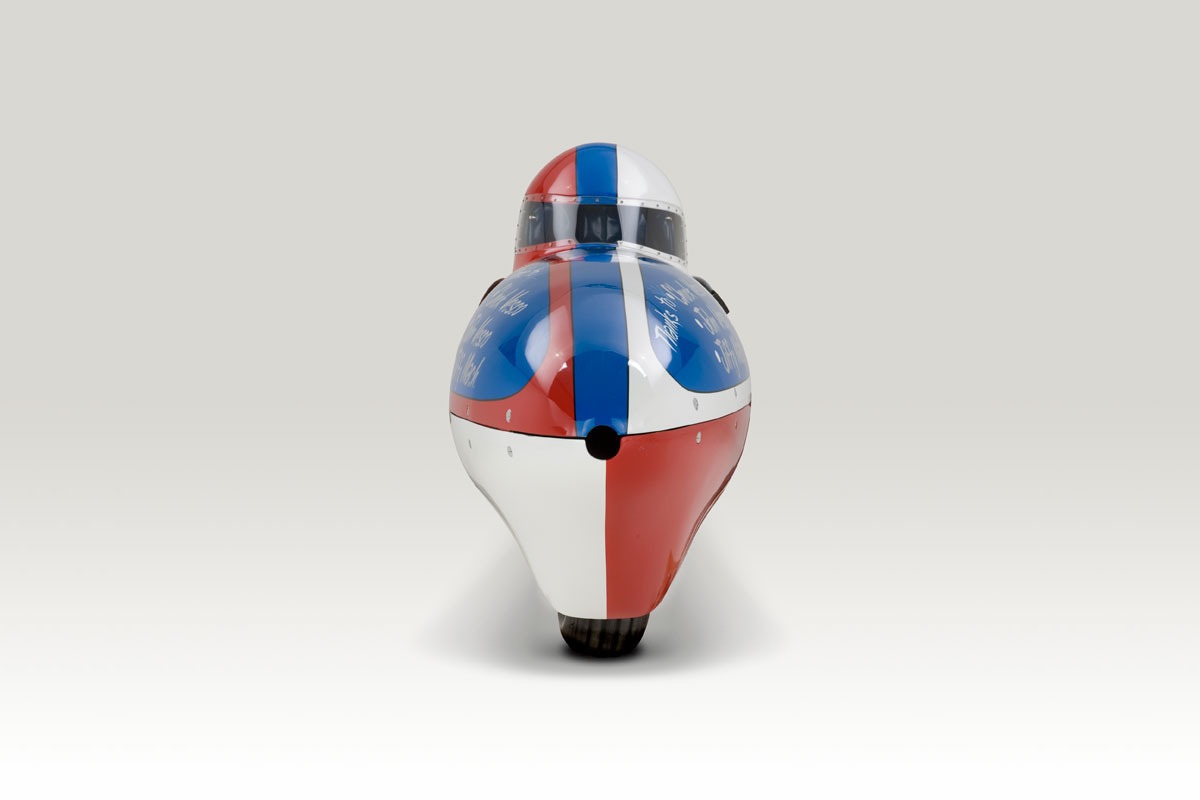
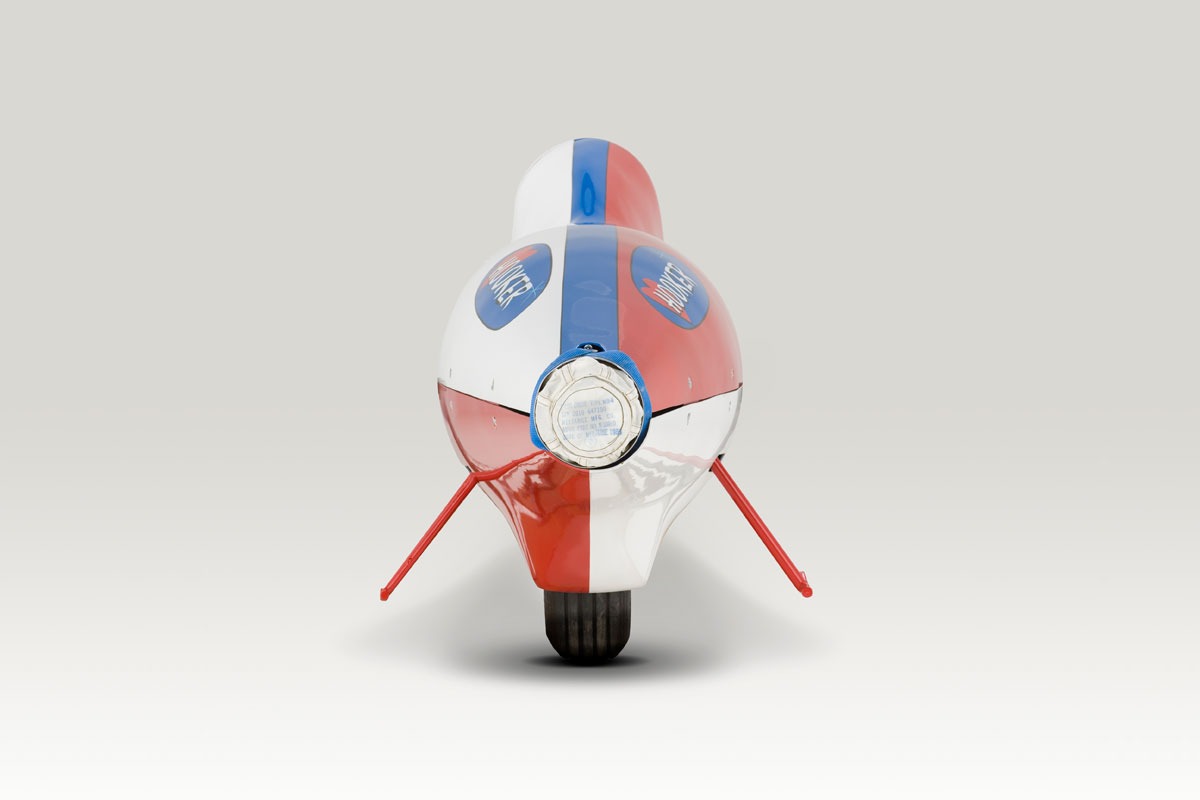
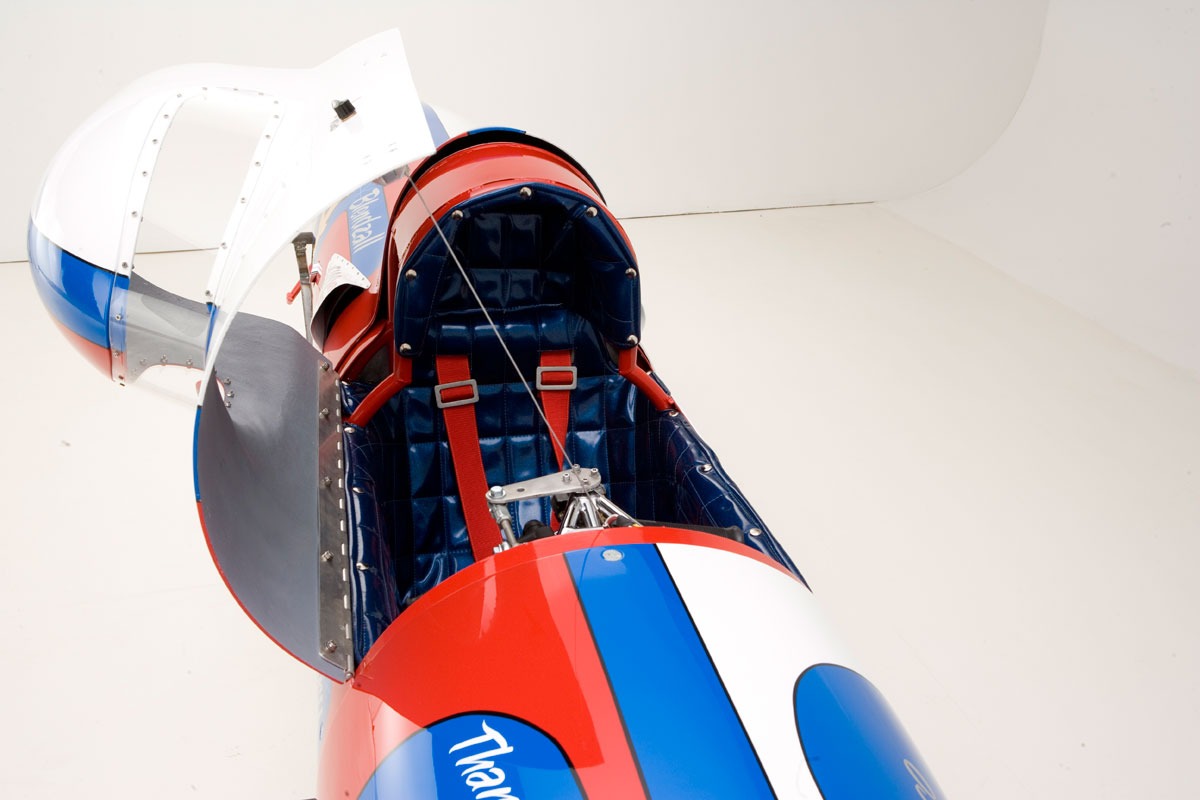
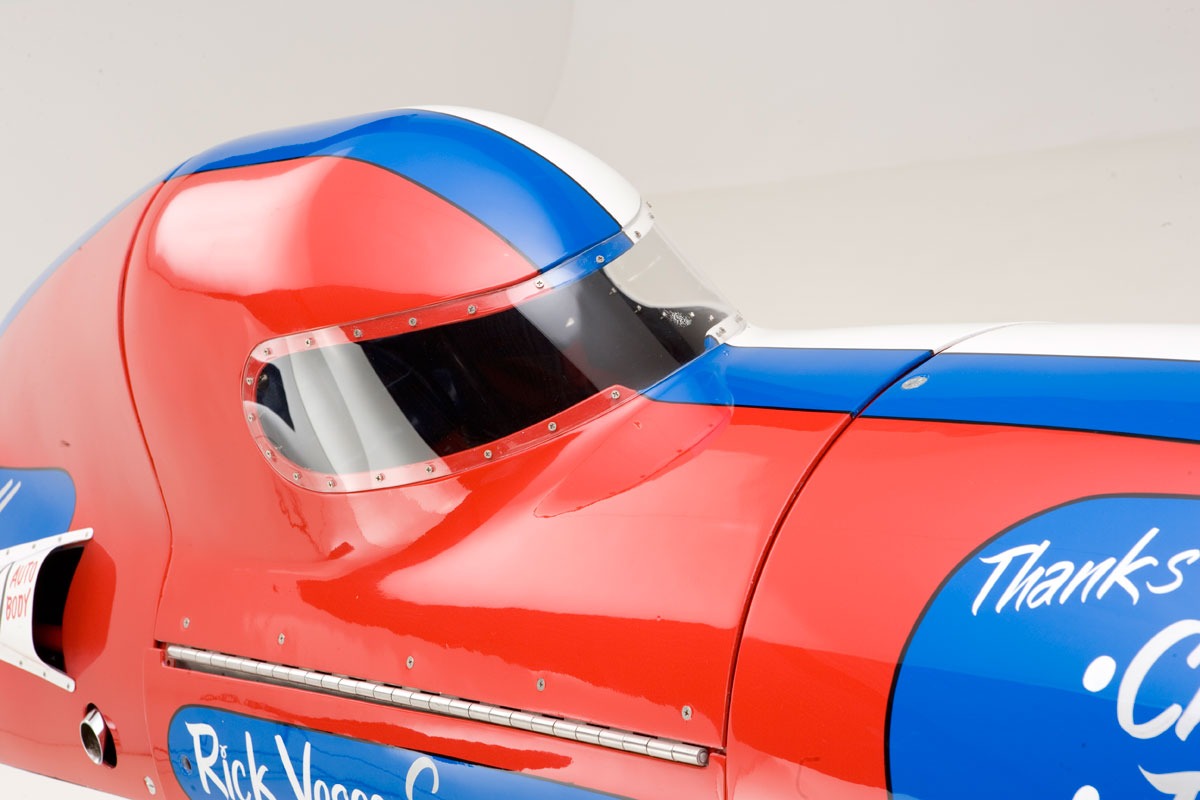
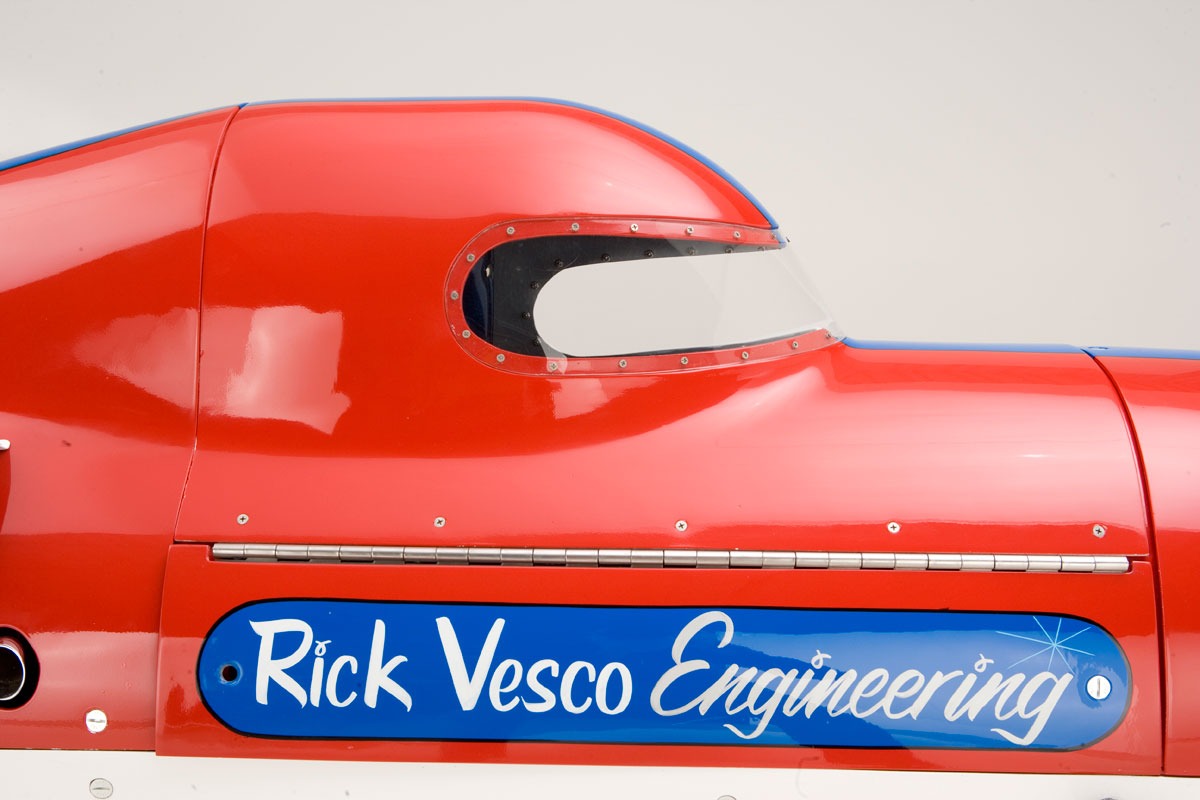
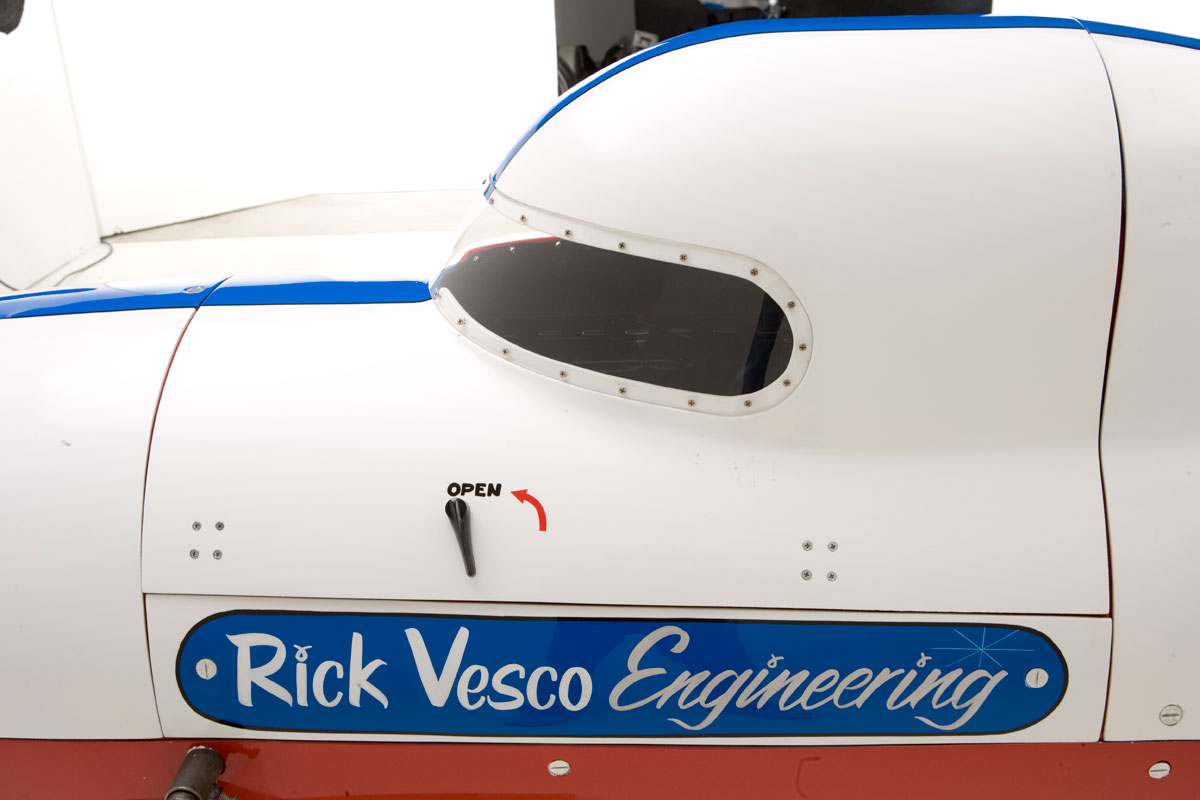
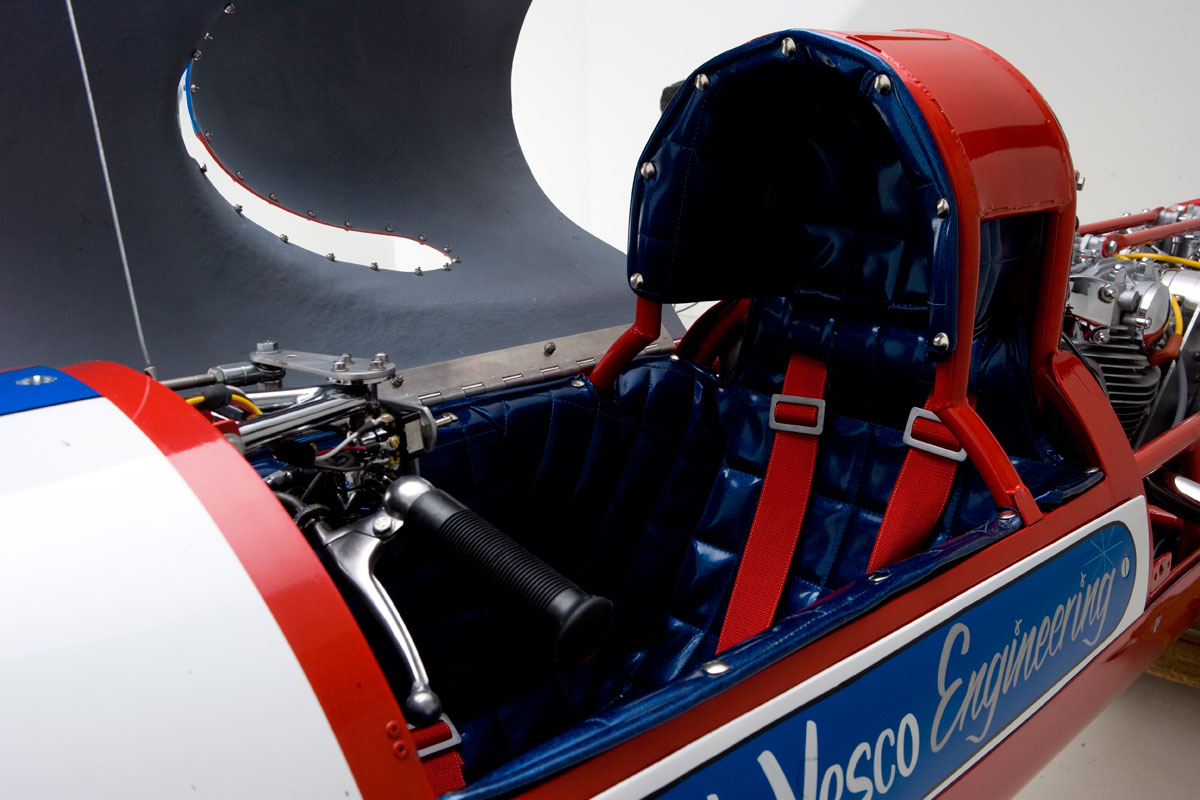
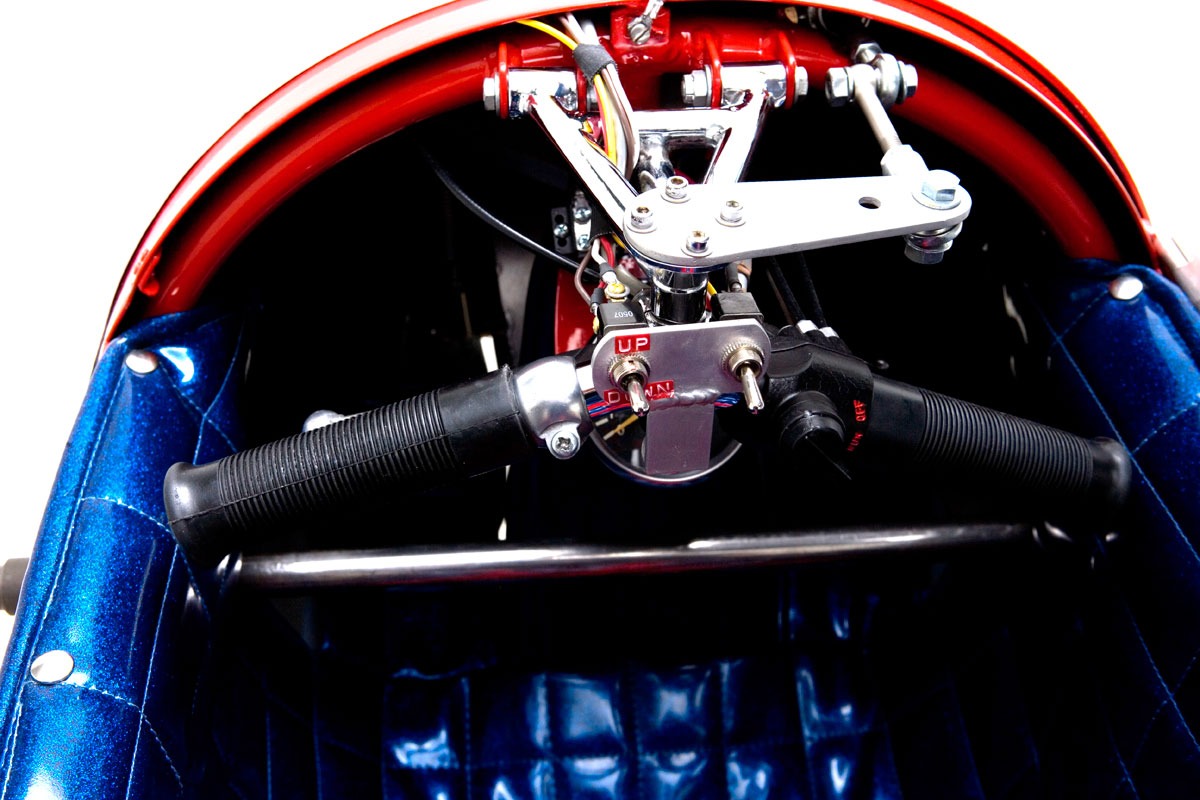
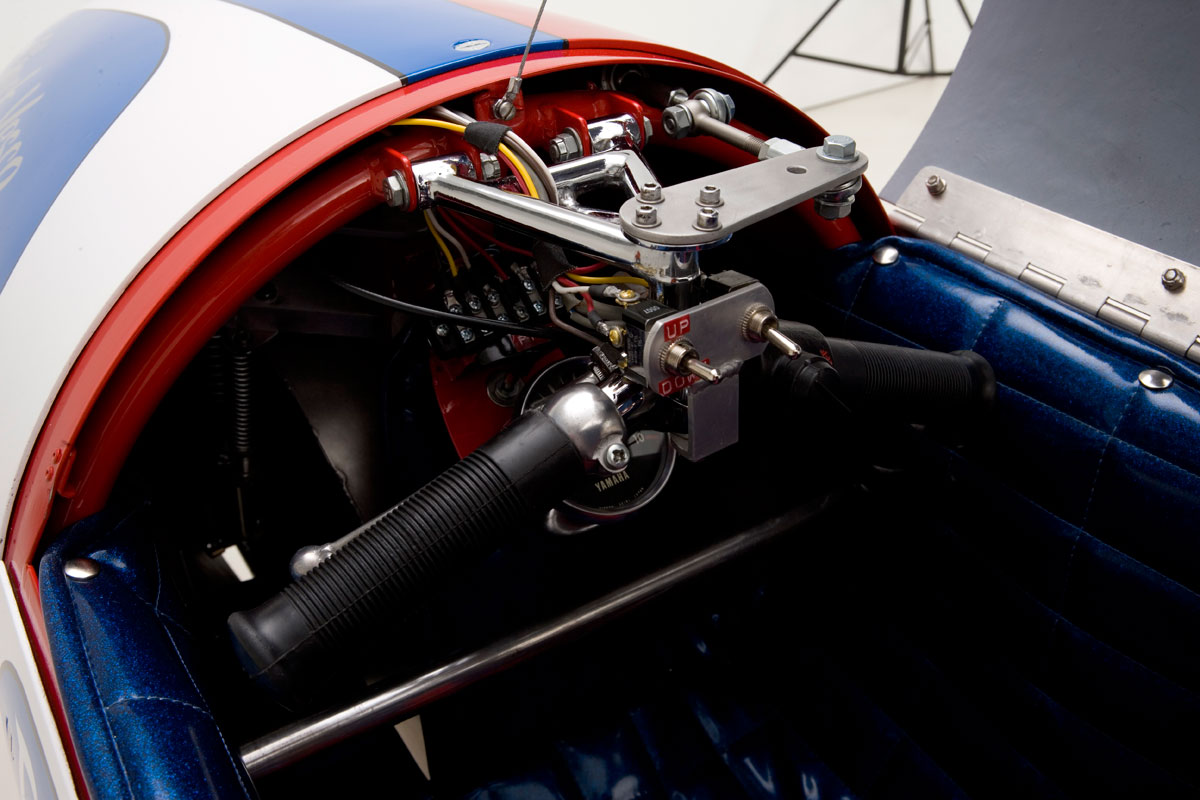
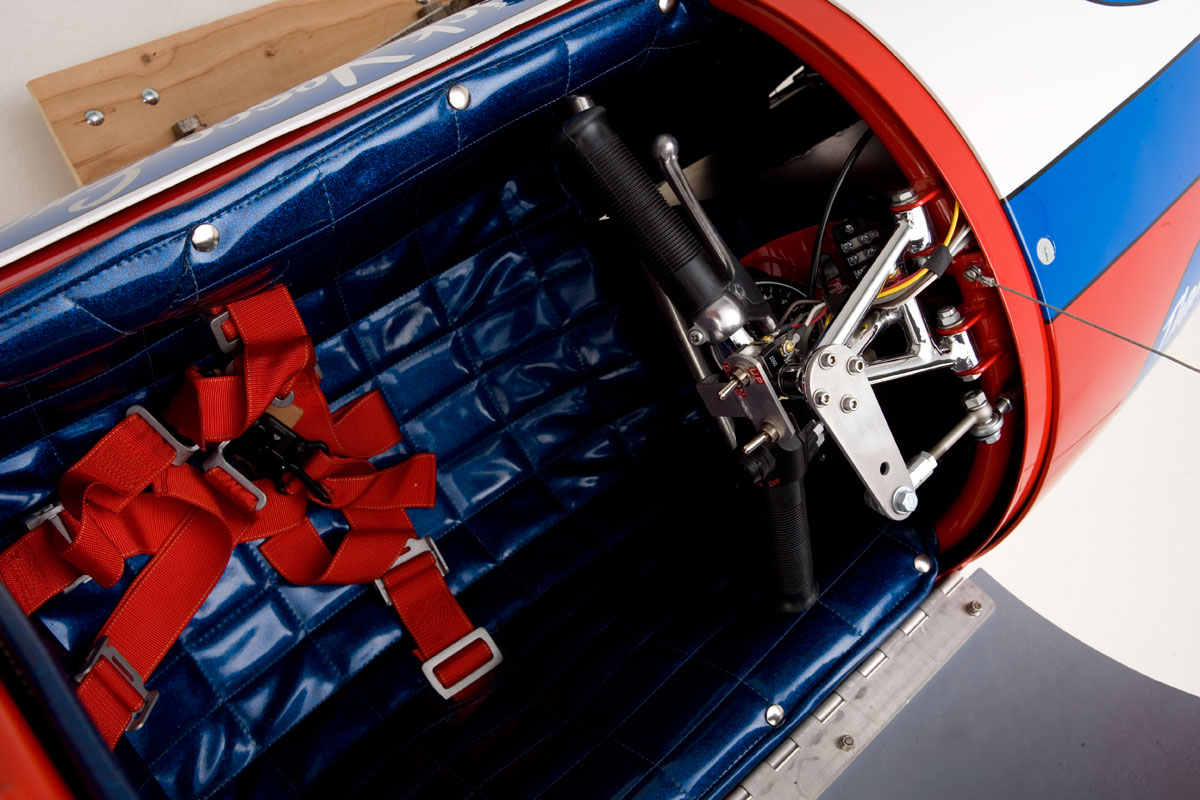
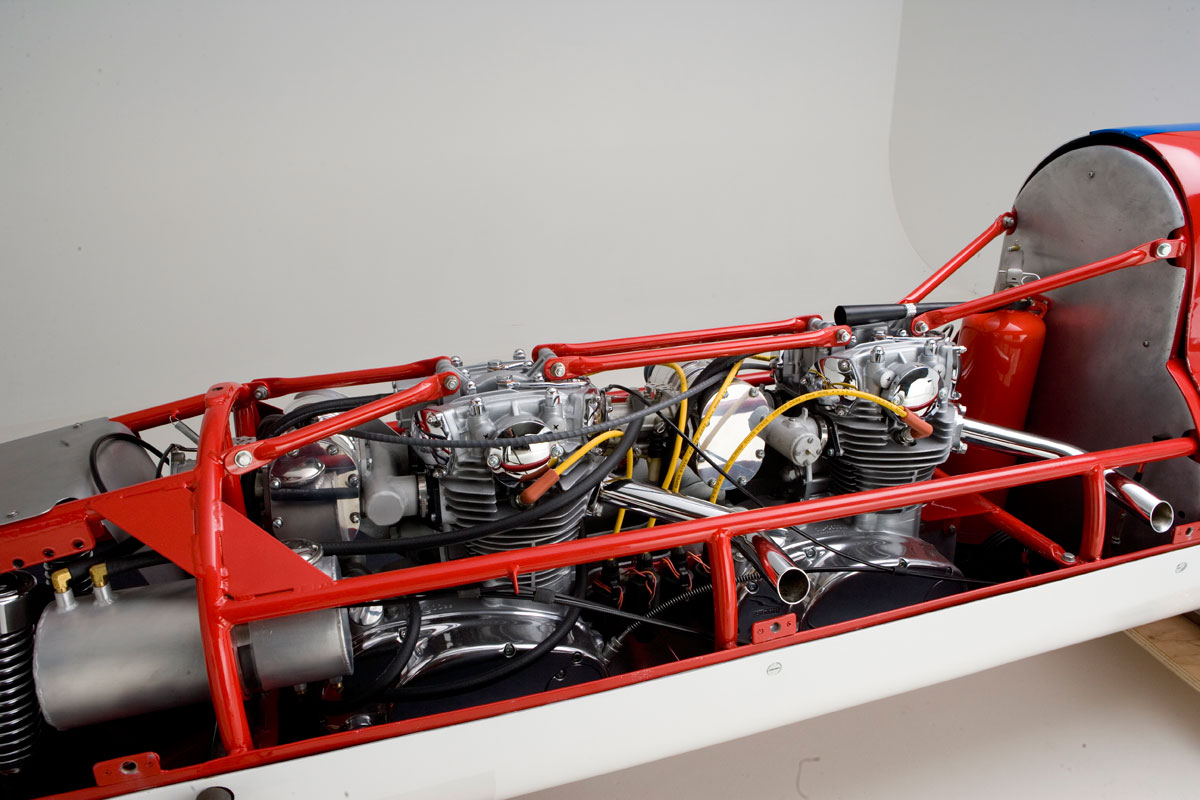
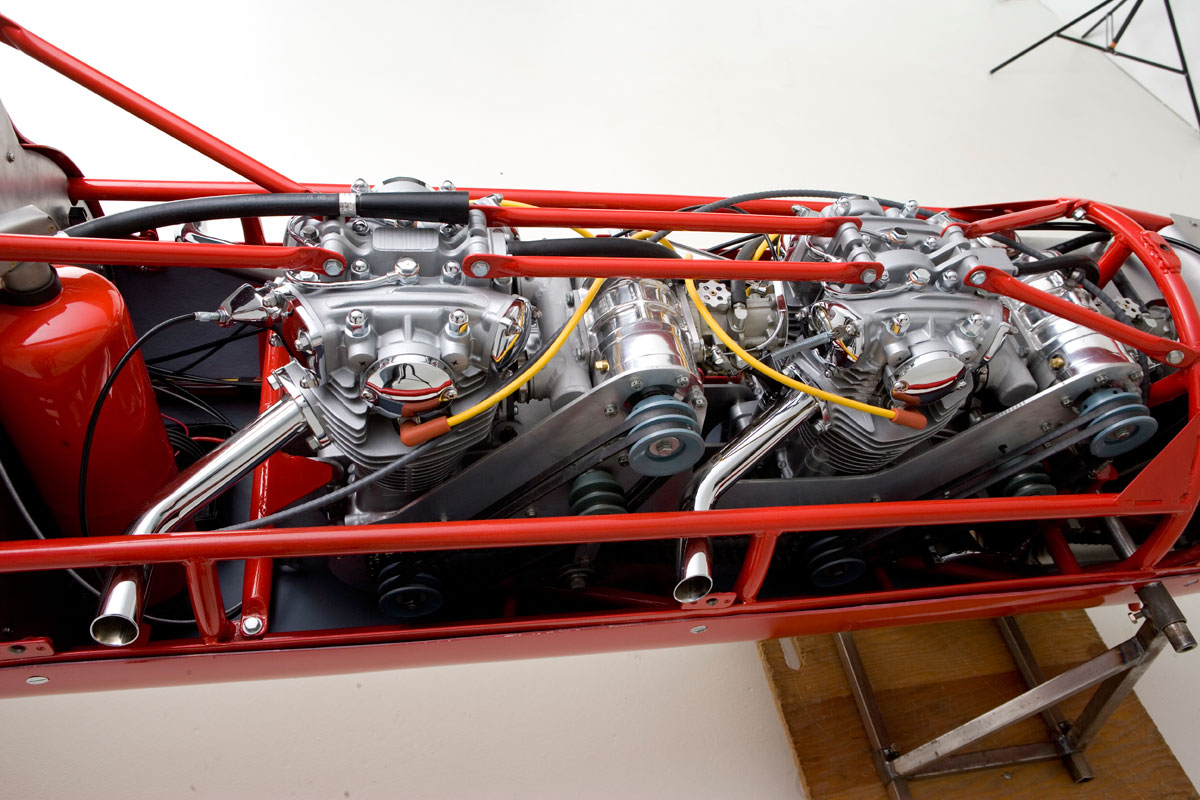
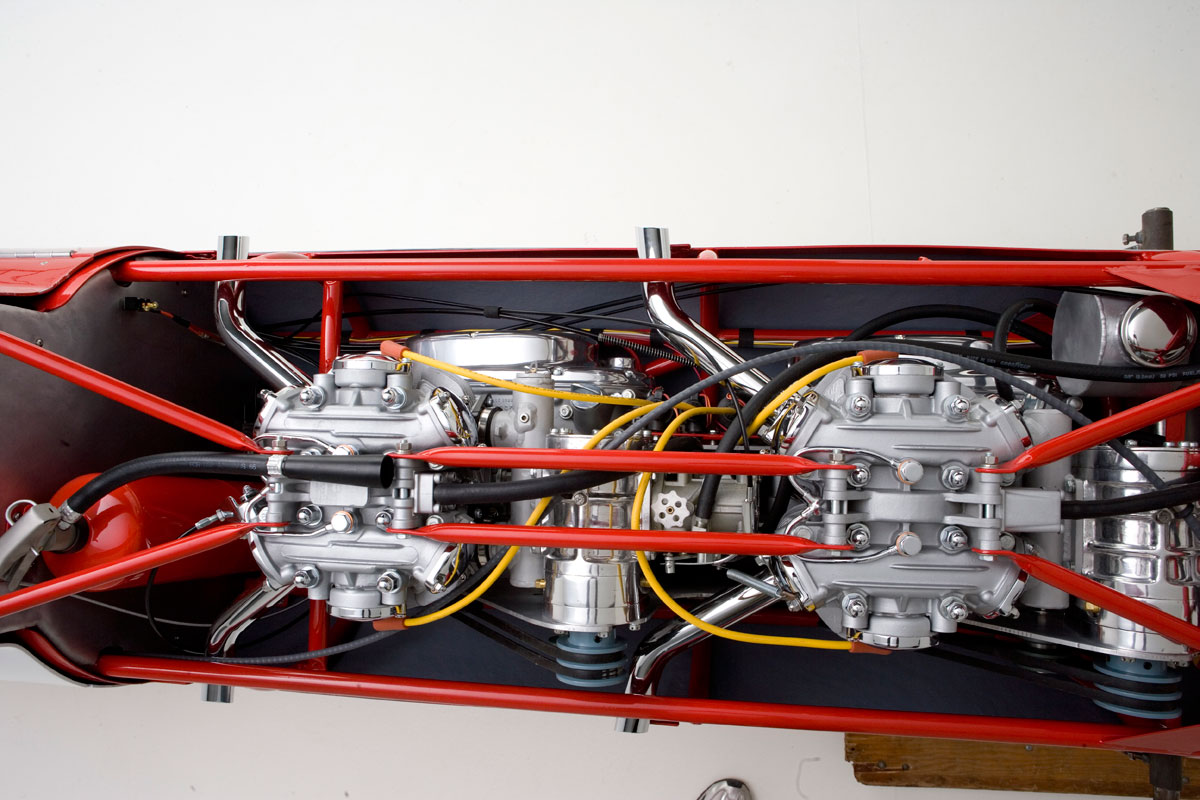
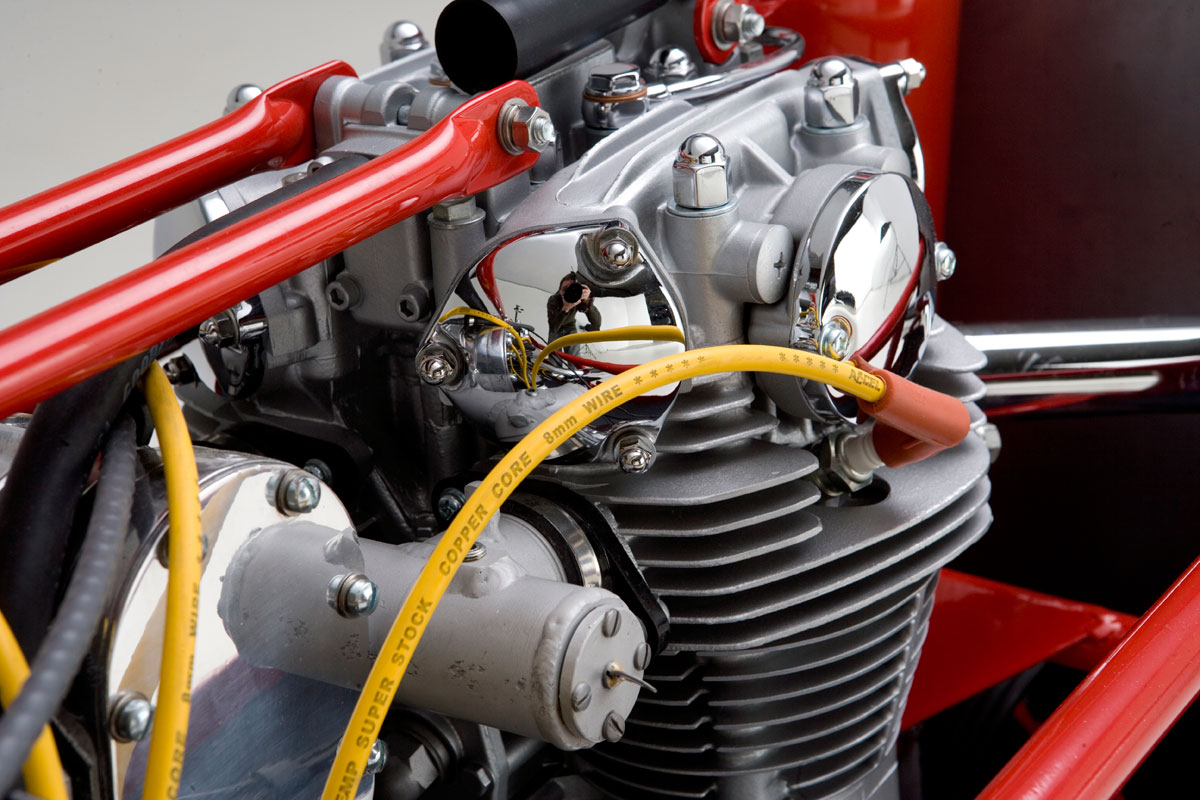
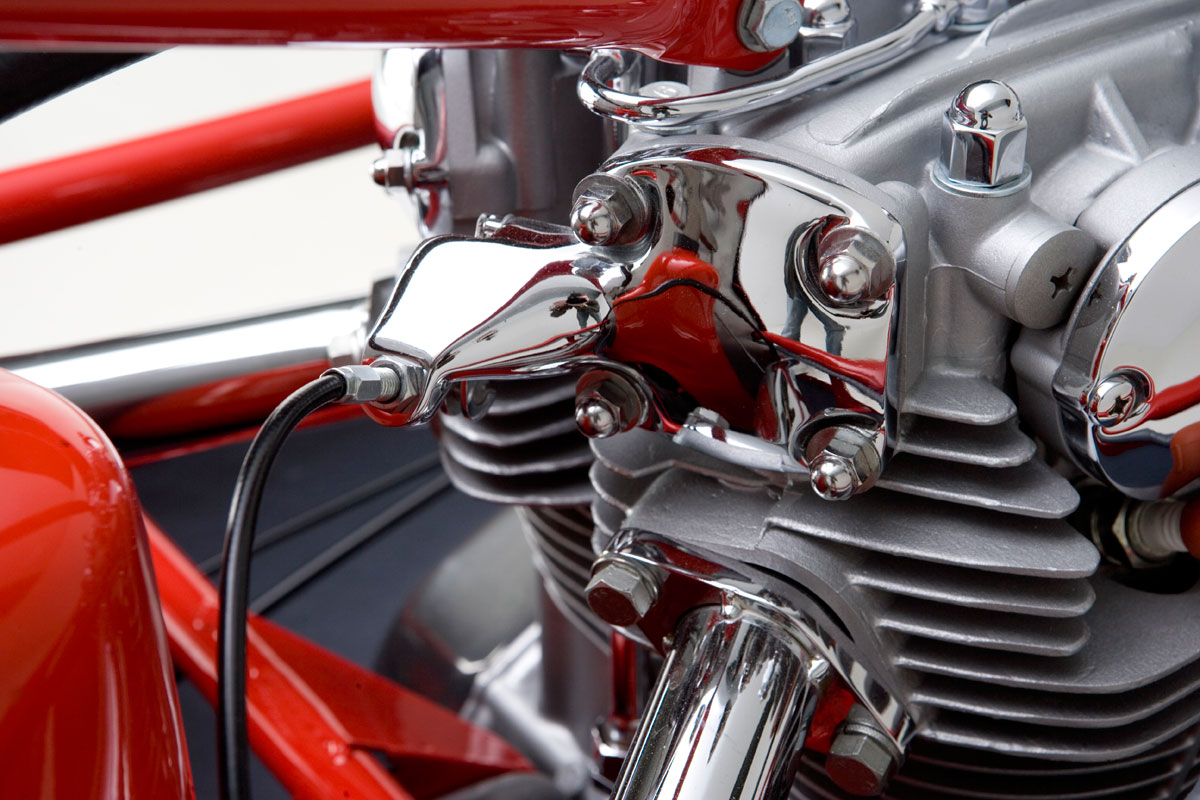
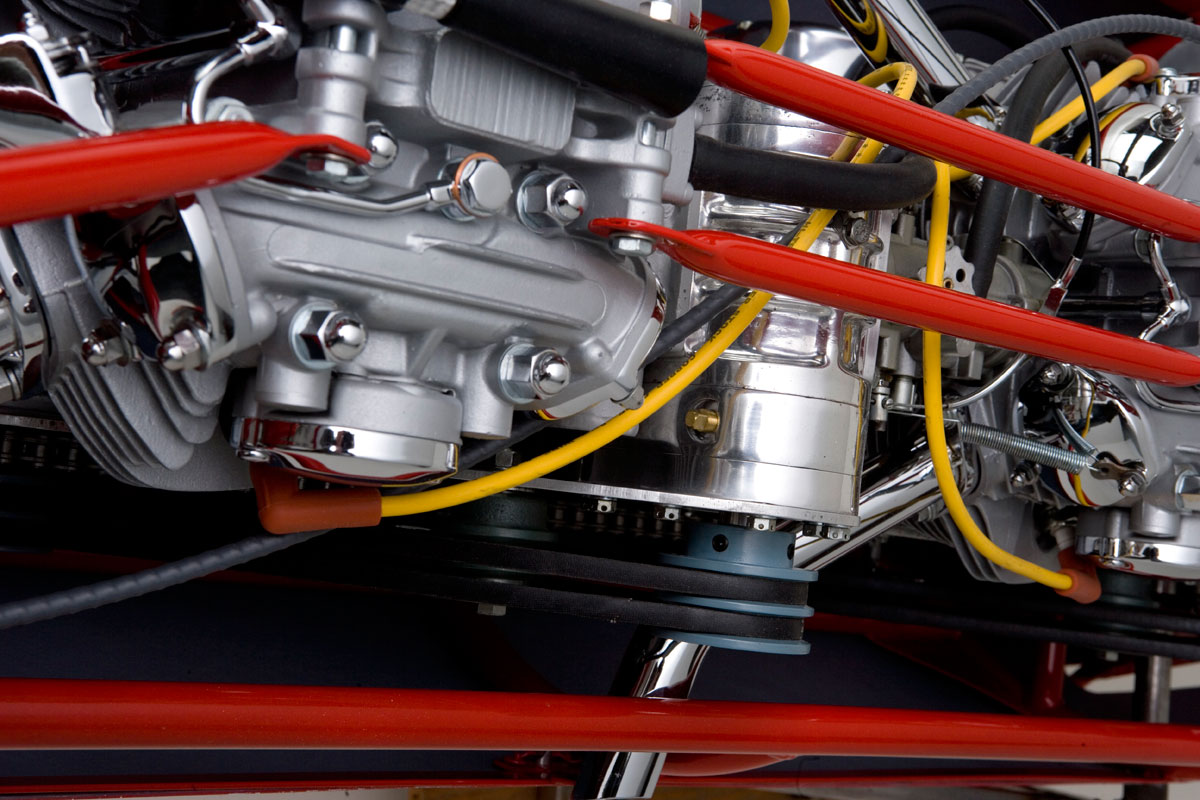
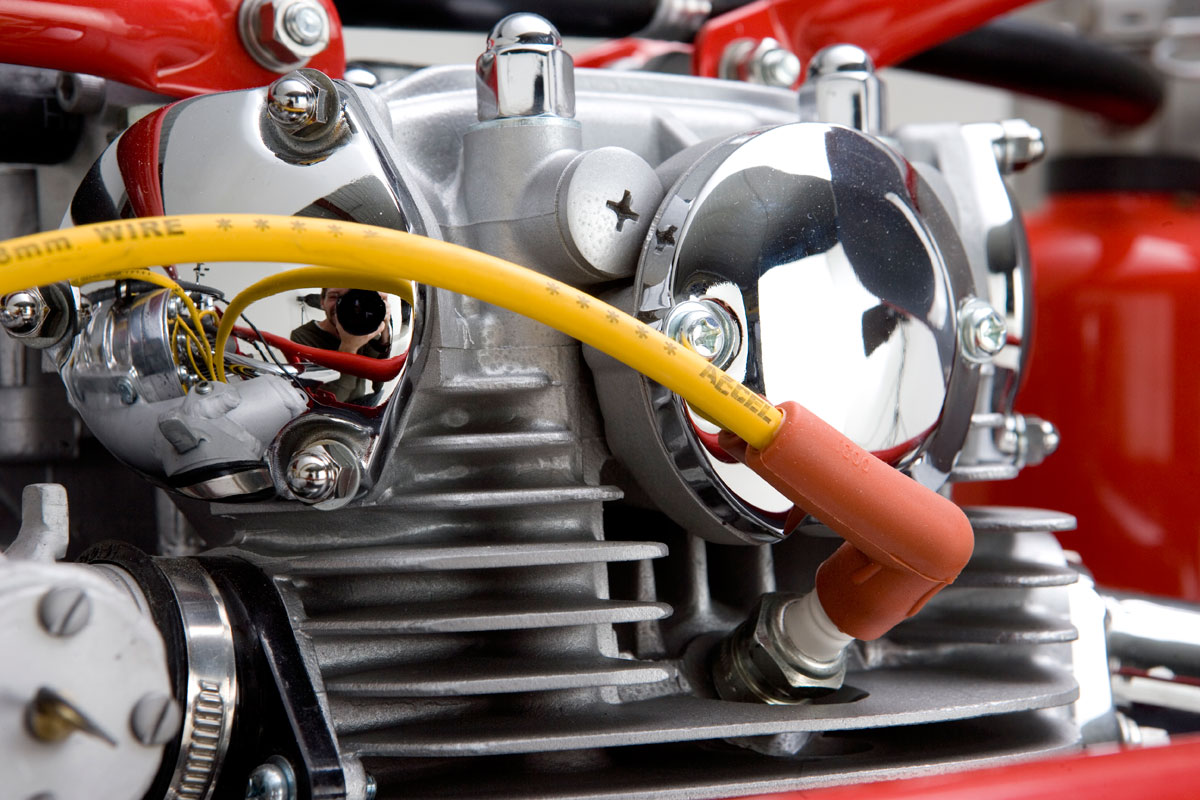
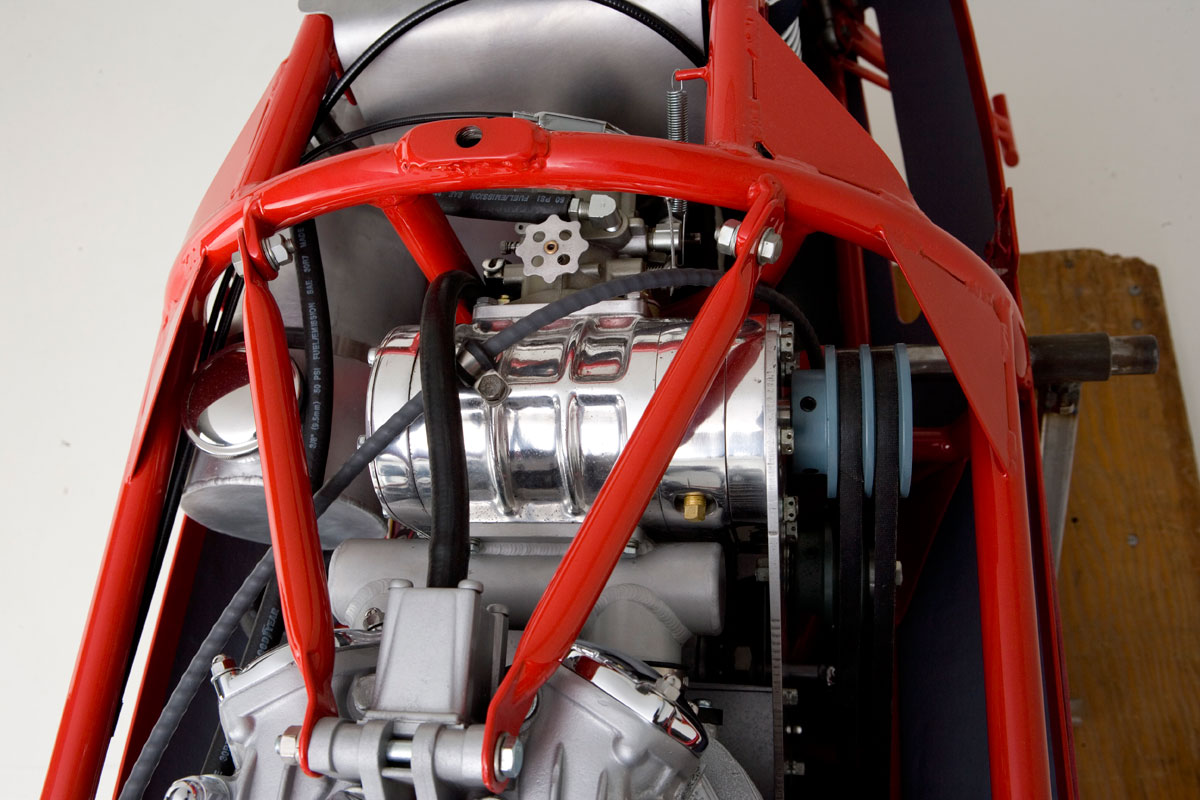
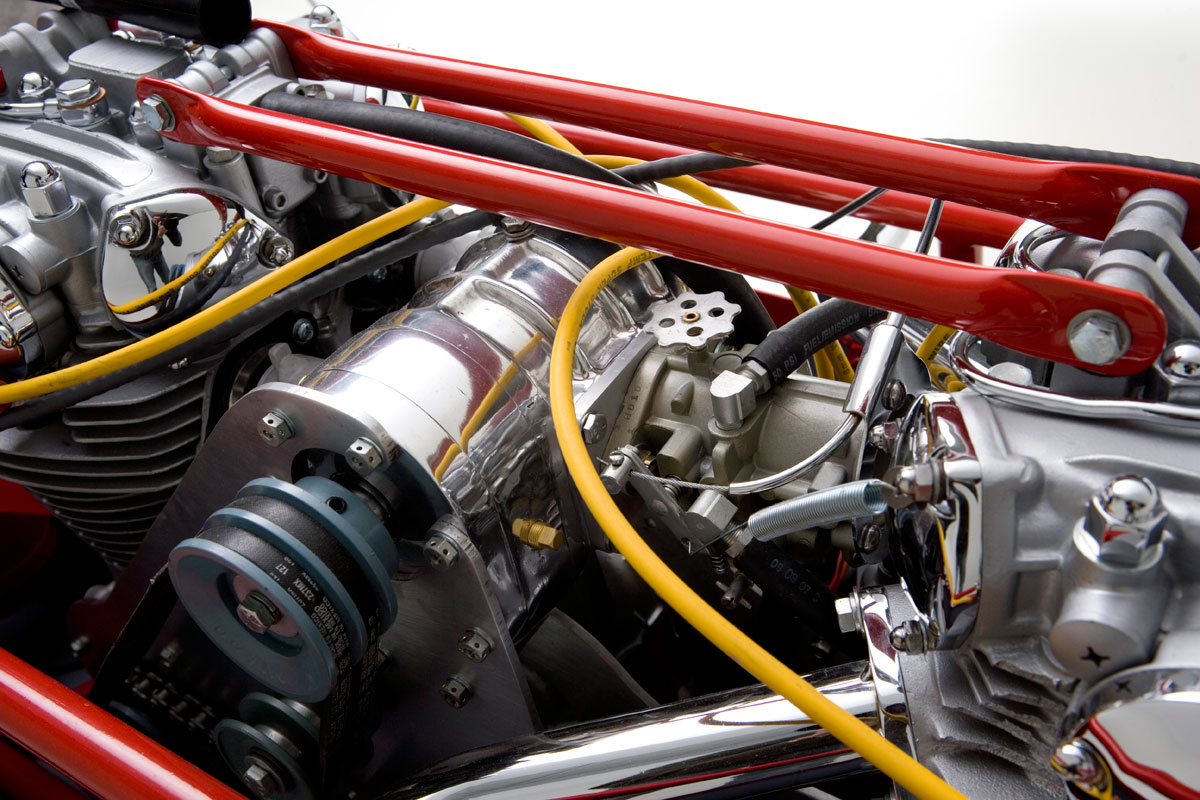
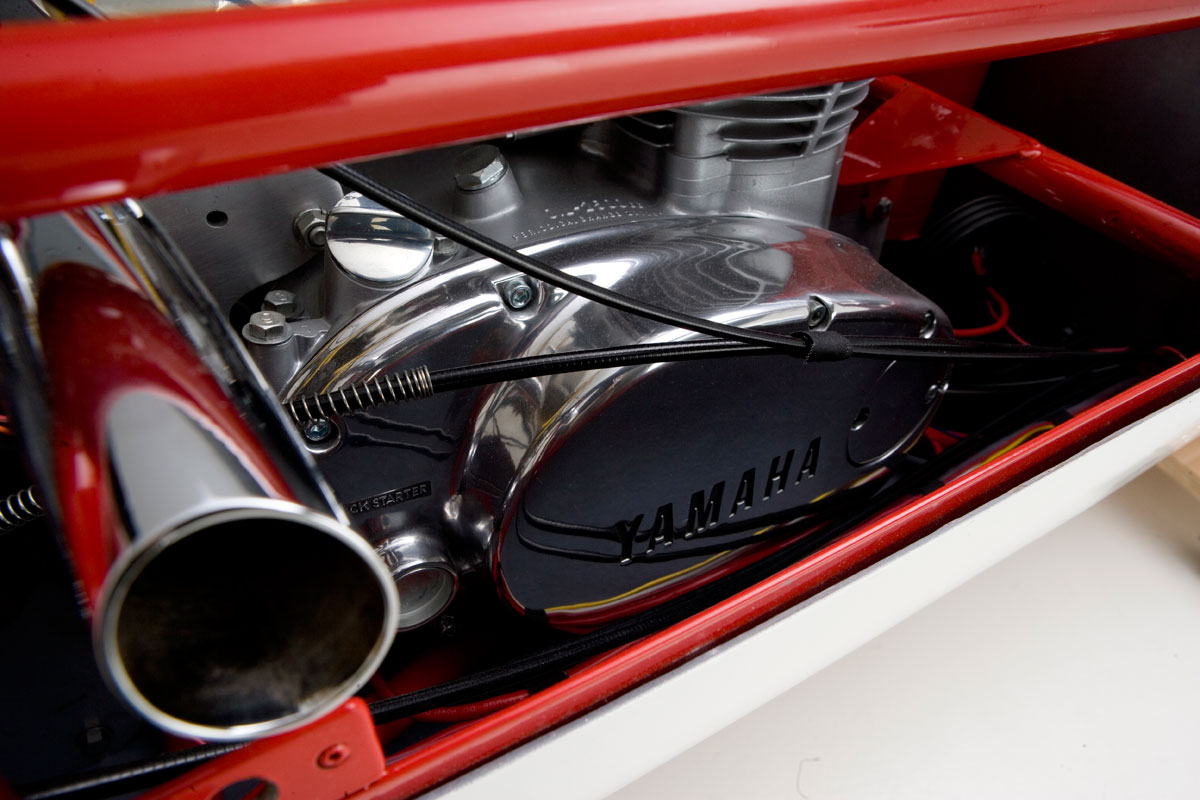
Great idea to feature the streamliners and be sure to mention this years Bonneville dates so we can see them run.